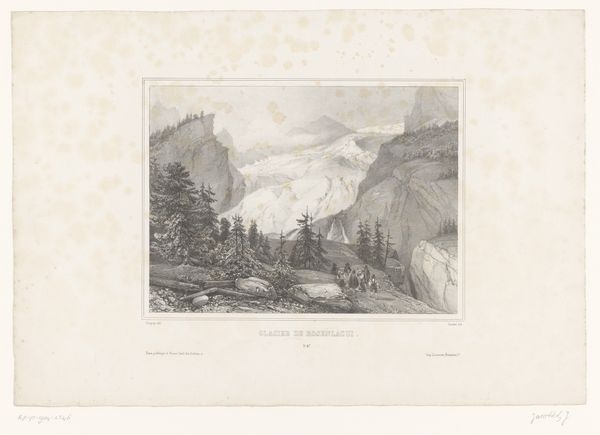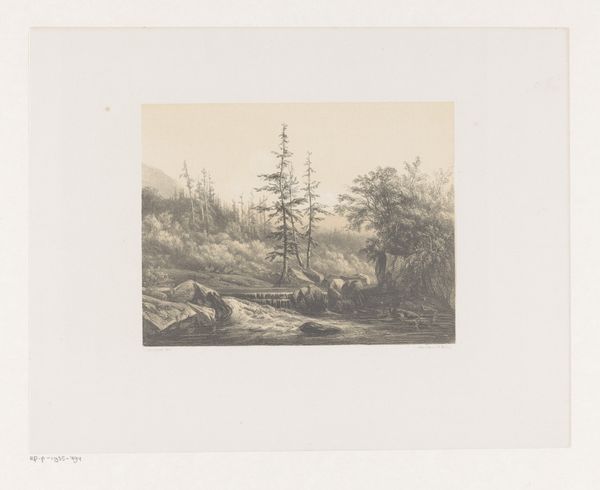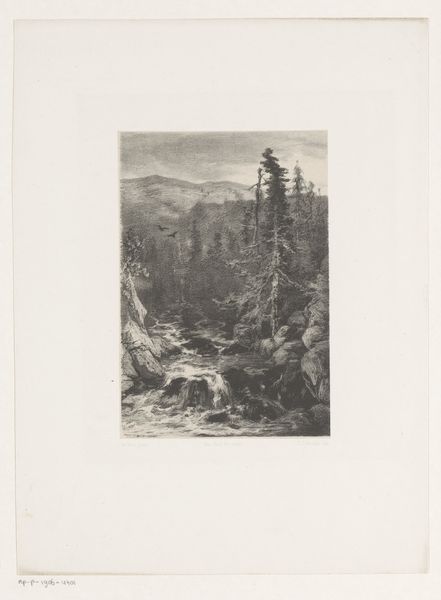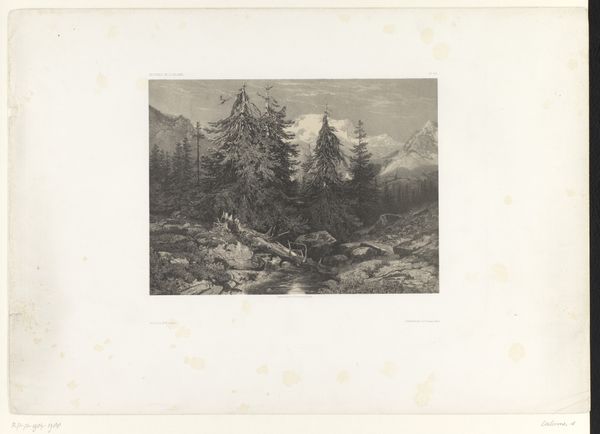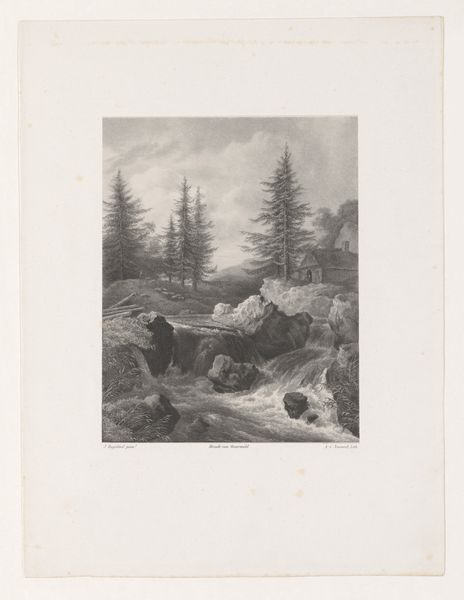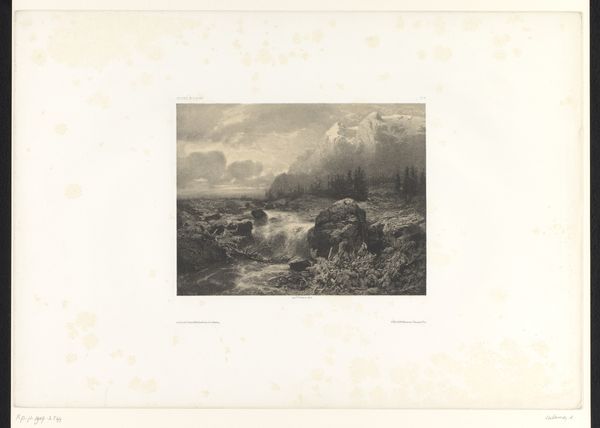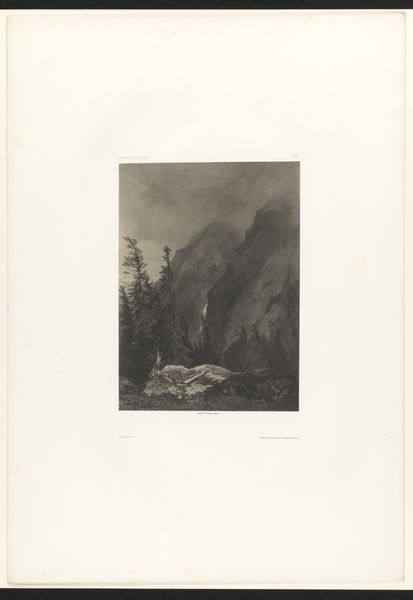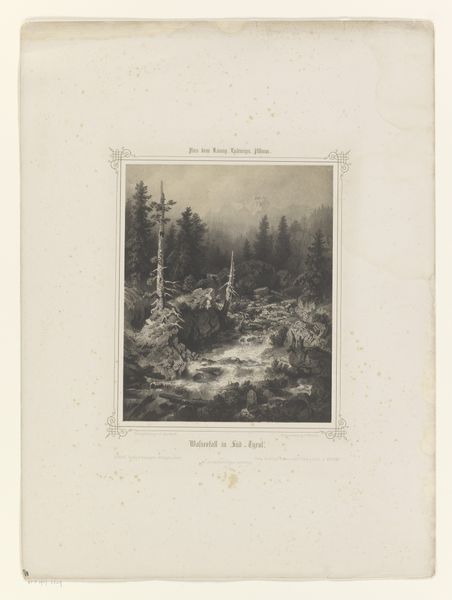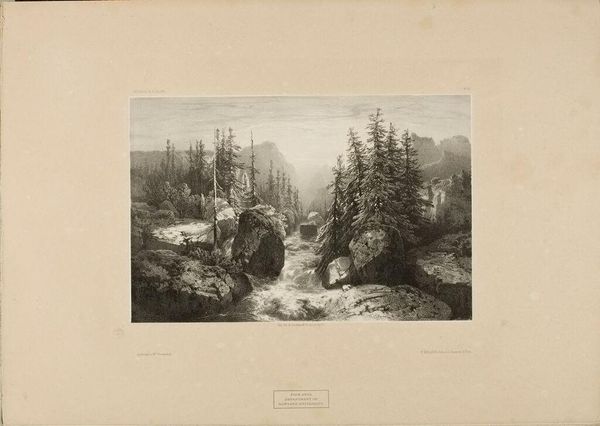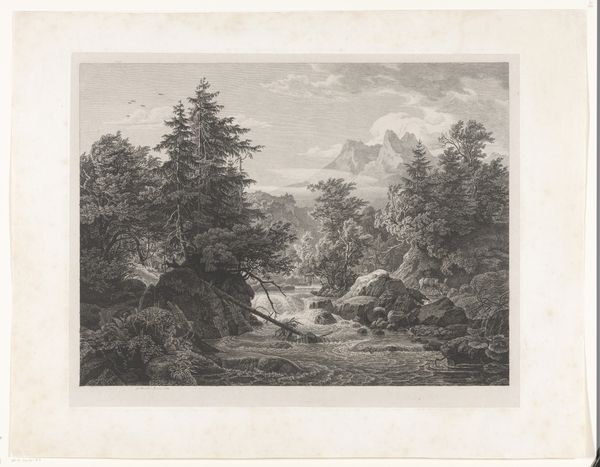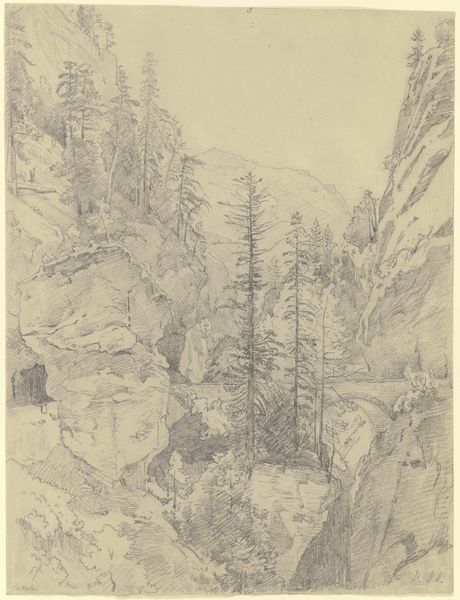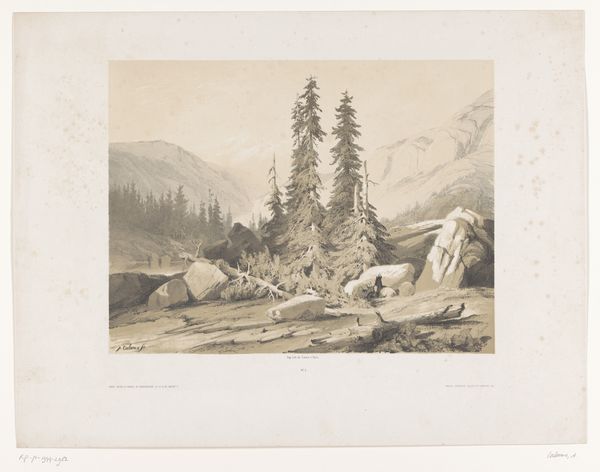
Dimensions: height 389 mm, width 559 mm
Copyright: Rijks Museum: Open Domain
Curator: Here, we have Alexandre Calame's "Stroom van de Reichenbach bij de Scheidegg," dating from 1852 to 1855. It's a drawing, incredibly detailed for one done on paper. Editor: Immediately, the energy is striking! It feels wild, almost untamed. The torrent of water is quite overwhelming. The artist really captured the raw power of nature. Curator: Calame was a master of Romantic landscape painting, channeling the sublime. One has to admire his skill with light and shadow. I wonder if he ever took a break while creating it; imagine the hours, perhaps even days, involved. What kind of paper lends itself to so much meticulous shading and detailing? Editor: Indeed! It’s not just the paper, though the fibers must be key, right? I'm fascinated by how drawings like this existed within a whole economy of image-making, leading towards mass reproduction through engravings. Each line has the potential for multiplication and dissemination, influencing perceptions of these landscapes. And consider the labor of the draughtsman – their time, the materials, all contributing to a very particular romanticized view. Curator: It does make you wonder, doesn't it? Were these grand landscapes truly "untouched," or were they already being molded by tourism, by industry? Maybe Calame was drawn to the sublime to help find himself amongst these huge rocks. It seems a lot like meditation or soul searching. Editor: Precisely! This drawing becomes more than just a depiction; it’s a crafted representation serving specific cultural functions. Looking at this piece, I'm thinking about the tools he would've used—different pencils, erasers, perhaps even a magnifying glass for those tiny details, each with their own histories. These materials directly connect the artist’s intention to the final work and also mediate our access to the experience, really. Curator: I suppose we’re left to ponder nature’s indifference or embrace, maybe a mix of both? What kind of paper could manage to support that much tonal variety! So much detail is in plain sight! Editor: Yes, it's a confluence of forces: the material, the artistic hand, and the socio-economic contexts all crashing together like the Reichenbach’s currents.
Comments
No comments
Be the first to comment and join the conversation on the ultimate creative platform.
